
View of Anak Krakatau from the W (May 2008). The 2007 crater is seen degassing on the left, the principle cone is in the center, the rim of pre-1960 cone is slightly to the right.
 |
|
View of Anak Krakatau from the W (May 2008). The 2007 crater is seen degassing on the left, the principle cone is in the center, the rim of pre-1960 cone is slightly to the right. |
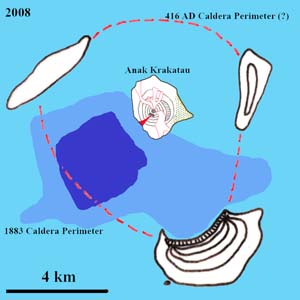 |
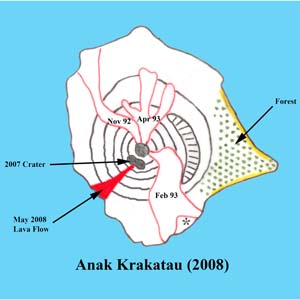 |
|
Location of Anak Krakatau in the Krakatau archipelago (N at top) |
Rough sketch of Anak Krakatau in 2008. |
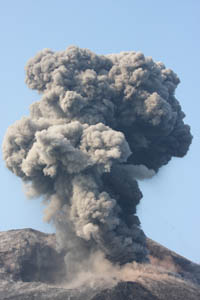 |
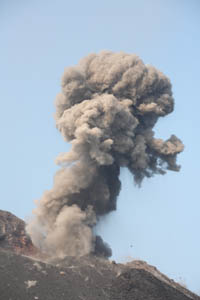 |
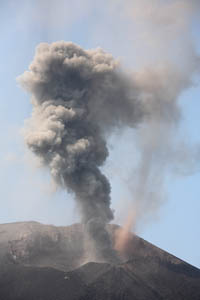 |
Mushroom-Shaped Ash Cloud |
Poodle-Shaped Ash Cloud |
Ash Cloud and Small Tornado |
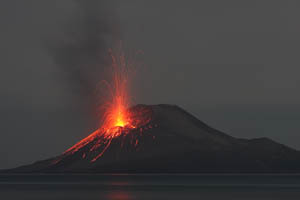 |
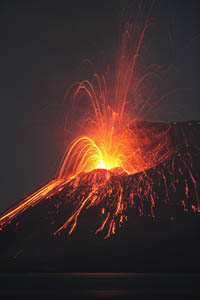 |
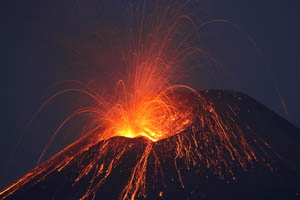 |
|
Nighttime View of Eruptions from Rakata Beach |
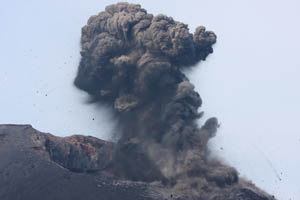 |
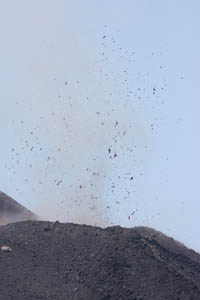 |
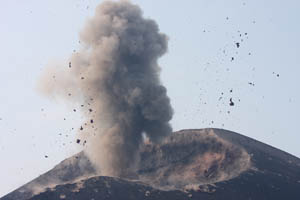 |
Ash Cloud with Concentrated Impact Zone at Base |
Strombolian Eruption without Ash |
Eruption Throwing Multiple Bombs |
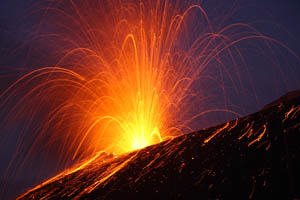 |
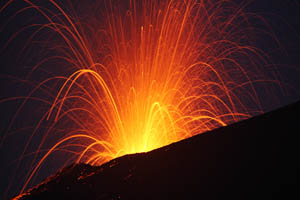 |
|
Strombolian Activity |
Strombolian Activity |
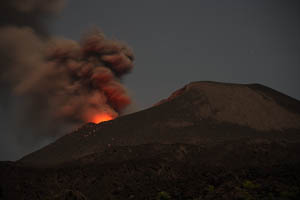 |
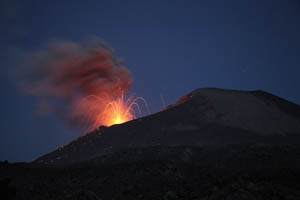 |
|
Ash-Rich Nighttime Strombolian Activity |
Small Strombolian Eruption at Night |
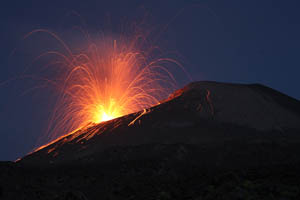 |
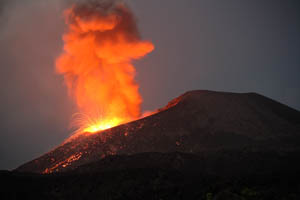 |
|
Powerful Nighttime Strombolian Eruption |
Activity Illuminates Ash/Steam Cloud at Night |
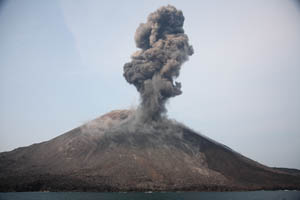 |
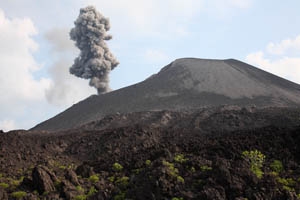 |
|
Anak Krakatau Eruption Column |
Anak Krakatau Viewed from SE Coastal Area |
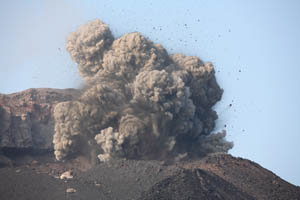 |
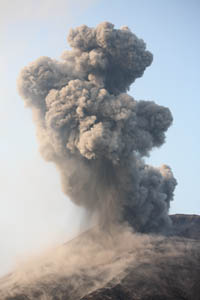 |
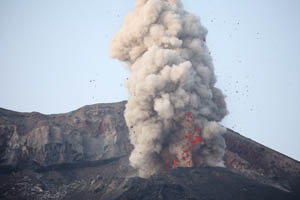 |
|
Further Eruption Columns |
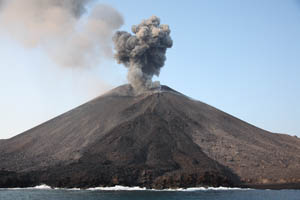 |
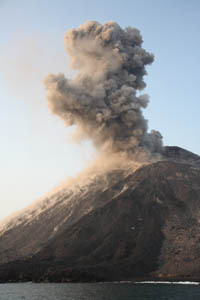 |
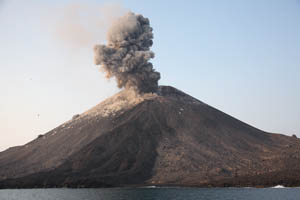 |
|
May 2008 Lava Flow In Front of Anak |
Powerful Blast Covers Flank with Bombs |
Anak Krakatau Eruption Observed from SSW |
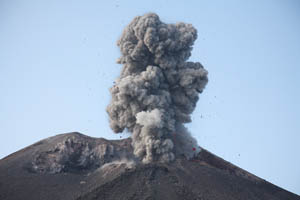 |
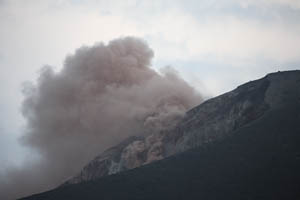 |
|
Image of Crater from SW with Eruption Column |
Partial Collapse of Wall Dividing Main and 2007 Craters |
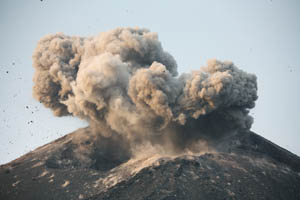 |
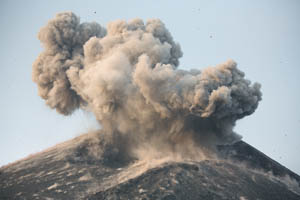 |
|
Brief explosive Eruption |
Note Dust being Thrown Up by Landing Bombs |
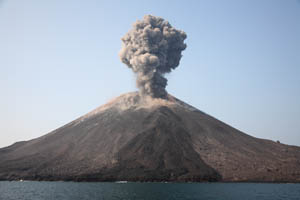 |
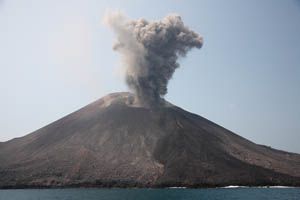 |
|
Anak Krakatau Eruption Observed from SW |
Anak Krakatau Eruption Observed from WSW |
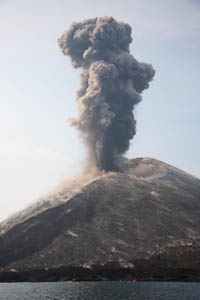 |
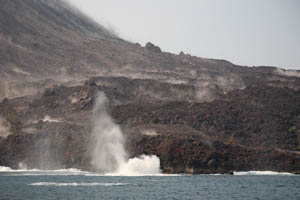 |
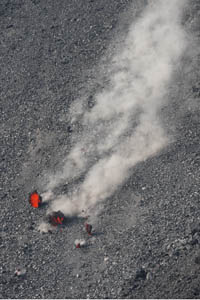 |
Eruption with bomb impact all over flanks |
Bombs land near shore and in water |
Volcanic bombs rolling down the flank |
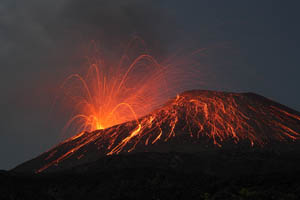 |
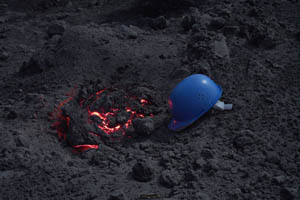 |
|
Powerful nightime eruption - note that whole crater covered by incandescent bombs |
Bomb that landed 700m from crater with helmet for scale |
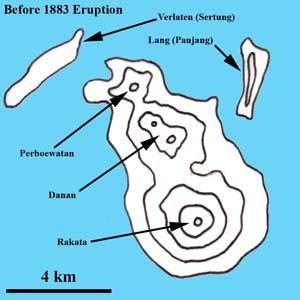 |
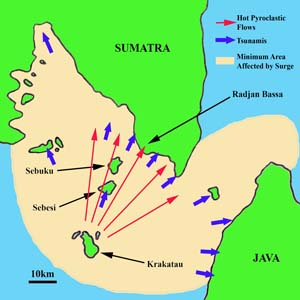 |
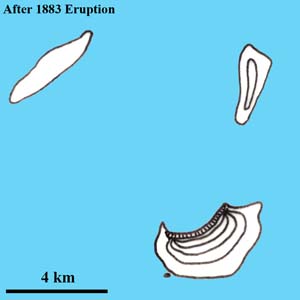 |
|
Krakatau Before the 1883 Eruption |
Impact of 1883 Eruption |
Remains of Krakatau After 1883 Eruption |
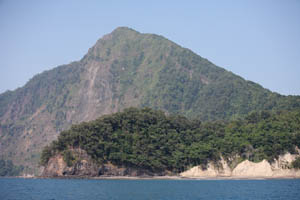 |
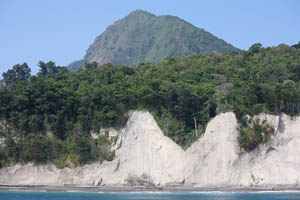 |
|
Steep-sided N face of Rakata |
Deposits from 1883 eruption on W coast of Rakata |
|
View from boat located SE |
Nighttime eruptions viewed from Rakata |
View from boat located SE |
|
Explosive eruptions throwing out numerous volcanic bombs |
|
Ash-rich eruptions |
Ash billowing out |
Further eruption with significant rockfall |
View from E during eruptive pause |
|
Nighttime eruptions viewed from Rakata |
|
Nighttime eruptions viewed from Rakata |
|
Nighttime eruptions viewed from Rakata - note lightning in central image |
|
Extremely powerful explosion (1/5) |
Extremely powerful explosion (2/5) |
Extremely powerful explosion (3/5) |
|
Extremely powerful explosion (4/5) |
Extremely powerful explosion (5/5) - note burning forest on right |
Landing site on Anak Island (East beach) |
Fresh bomb crater on path to Anak (helmet for scale) |
Landing site on Anak Island |
Volcanic bomb crater on path |
Bomb crater on path as it emerges from forest |
Huge volcanic bomb, probably from earlier eruption phase |
|
Views of strong eruptions from edge of forest on Anak |
|
View of large ash cloud from lower E flank of Anak Krakatau island |
View of large ash cloud from lower E flank of Anak Krakatau island |
Bombs throw up ash as they land near photographers |
Bombs land near photographers (note rolling bomb in left corner) |
Impact craters of bombs shown on left images (helmet for scale) |
|
Fresh impact crater with smouldering plant material |
Fresh basaltic lava bomb (incandescent type) |
Fresh impact crater with smouldering plant material |
|
Camping area on Rakata - completely washed away by tsunamis 6 weeks later |